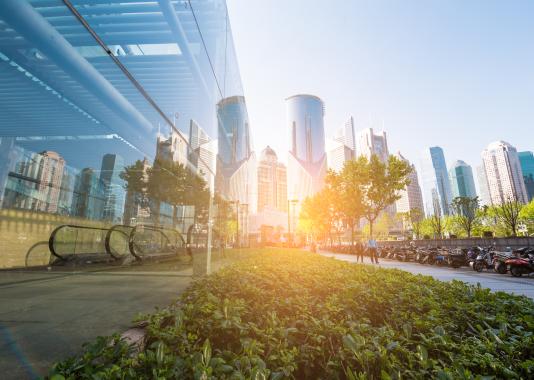Recovery and Resolution Planning Requirements in…

Transforming cities into sustainable cities: a green and smart city by adapting new megatrends such as green energy, smart mobility, good waste & education systems or by bringing nature to the city.

We currently live in what they call "the age of the city". The world is changing at a fast pace, with population growth, global economy and developing technology, urban migration has become the norm. This phenomenon makes people reflect on the most viable place to live, the environmental impact and the financial stability of a city. In addition to this, it's a fact that cities represent major contributors to climate change. According to the UN Habitat, cities consume 78% of the world's energy and produce more than 60% of GHG emissions. Yet they only account for 2% of Earth's surface.
At Sia Partners we'll make your city more sustainable.
To do so we'll assess your needs and current situation/ actions, benchmark your municipality with the world's most sustainable cities and we'll then take action on seven identified aspects:

A sustainable city requires a shift towards green and renewable energies such as wind, solar, hydropower and biogas. Ensuring access to affordable and reliable energy for all.

Sustainable development is highly dependent on mobility. First, implementing fossil-free transportation is key to tackling climate change and improving citizens' quality of life. Second, an interconnected, affordable and safe transport system is determinant to increase accessibility to everyone:

Sustainable cities also have smart building' designs that can help reduce the negative impact of climate change, and pollution and improve citizen's quality of life. Properties have to become more energy-efficient and use more green and renewable materials:

Urban agriculture is a component of sustainable infrastructure. Vertical farming, community-supported agriculture and farmer's markets are examples of how a city can contribute to organic practices, local support, and food waste reduction:

Waste is expensive to deal with and represents a threat to citizens' health and nature. Reducing waste, recognizing its value, and reusing it through cost-efficient waste management systems can help close the loop:
- Reduce the amount of waste produced
- Reuse the existing resources
- Recycle with waste management systems

The future of a sustainable city lies in the hands of the next generations. Hence, the active participation of citizens and strong education systems are the roots of an inclusive environment but also of skilled and environmentally altered labor:

Because cities are becoming concrete jungles, more citizens develop the urge to escape the city to breathe. Conserving green space, as well as natural environments in urban areas, improves citizen's quality of life and enriches biodiversity:
Managing Partner & Climate Analysis Global Lead
Jean is Managing Partner and Climate Analysis Global Lead at Sia Partners. In charge of several business units for global transformations related to Sustainability and low Carbon strategies, AI/DS, Risk, Pricing & Revenues Mgt, Innovation & Strategic Roadmap.
